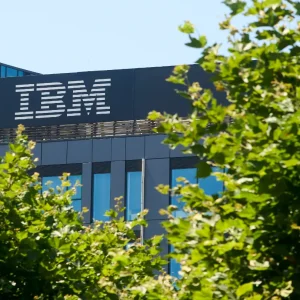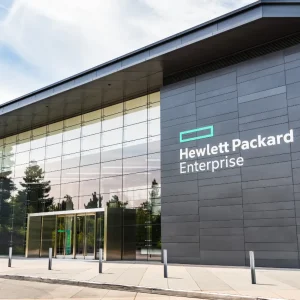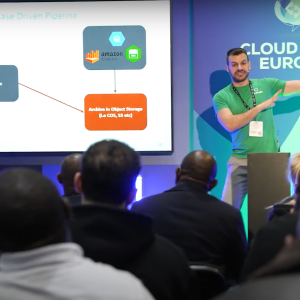
During these unpredictable times we’re living in, with new macroeconomics and regulatory challenges arising each week, certain things are proving fairly resistant to change.
As organisations of all sizes feel the pain of economic pressures and are tasked with delivering more capabilities in a more agile manner, there are two ways they can go. They either resist change and ignore new technologies that can make a difference, or they look to modernise and challenge what has been done, making it fit for the digital age.
Cloud computing and the associated services deployed using it is one technology that has seen massive growth in recent years. As businesses adopt multi-cloud strategies to meet their needs, namely better performance and value, there is no slowdown in IT spending. Predictions from Bloomberg Intelligence expect cloud IT spending to increase from $77 billion in 2015 to $205 billion in 2020. While, according to International Data Corporation (IDC), global investment in information and communications technology (ICT) is expected to hit nearly $4 trillion in 2018 – with growth being driven by investment in cloud and hybrid IT.
This is positive news for cloud service providers (CSPs) as b businesses continue to embrace the widespread benefits of cloud, strategic migration and adoption plans. But it’s also good news for the organisations themselves. The cloud market is maturing and as a result the cost of cloud is dropping with the strength of service on the rise. A quick glance at the dominant cloud leader shows this happening already. Since 2008, Amazon Web Services (AWS) has launched over 1,000 new features and has reduced its prices more than 60 times.
Naturally, this complicates the picture a little. Demand and spending are high and competition has risen with them. But not everyone can win – meaning it’s key for CSPs to have one eye on what makes their service viable, or risk losing out on a developing market to those who have.
Cloud concentration
Over the past couple of years, it’s been public and hybrid cloud models that have driven spending for cloud adoption. While the former is open to anyone, the latter requires a slightly more nuanced approach to cloud provision that grants businesses greater control over their sensitive data through a private model. At the same time it allows them to still benefit from public cloud features and working modes such as ‘cloud bursting’ or ‘split systems’.
They are different approaches. But the unifying factor between the two is that by moving to the cloud, businesses are placing their trust in cloud service providers, relying on their security and backup standards, rather than thinking solely about their own.
With that comes an expectation that sensitive data and critical processes will stay safe and remain available. But, as we know, this isn’t always the case and downtime does occur. In 2017, for example, an AWS outage affected a number of large websites, including the likes of Netflix, Pinterest and Spotify, as well as tens of thousands of smaller websites (connected thermostats and other Internet of Things apps and devices were also impacted). Meanwhile, a cloud configuration error led to the loss of customer data for Cisco in August of last year.
Vulnerable cloud, vulnerable spending
The various high-profile cloud incidents of the past few years showcase both the potential vulnerability of cloud and, with it, the potential vulnerability of providers whose users are impacted by issues.
If markets get competitive, spending goes up and prices drop (as we’re seeing happening), then any provider who’s not at the top of their game stands to experience trouble and a loss of customer trust. Media outlets love a cloud problem story. So bad news doesn’t take long to filter down to end users who will be unlikely to hesitate in taking their substantial IT spend to a CSP they can work with and trust.
Availability – the need is growing with each outage
When cloud services go down, a ripple effect of consequences begins. It starts with business operations stopping, resulting in workers become unable to do their jobs. At the same time customers experience poor service, the time needed to fix the problem (which can add further downtime). Before, finally, the aftermath of reputational damage and the financial consequences that brings. What’s clear is that alongside the current state of IT spending, with greater dependency on cloud resources, big outage and downtime incidents, there is an overwhelming need for IT availability.
When everything is working well, for the most part a robust and reliable cloud availability and backup solution yields in no consequences for the user. Cloud services work as planned, users can get on with their jobs, and – perhaps most importantly – spending goes on as planned. Indeed, had the businesses affected by the AWS outage mentioned above been protected by a cloud backup solution that worked alongside their core infrastructure, a significant amount of lost time, energy and money could’ve been saved. The outlay for such a service is comparatively small, but the savings it can deliver are huge.
It’s time for CSPs to define and measure clear business value to deliver digital business transformation. With Gartner[i] citing revenue growth as the key CEO objective, availability is going to be key to making that case. The spending power is there – it’s just a matter of who’s going to take advantage of it.
[i] Gartner – Market Trends: Successful CSP Digital Business Transformation Is Guided by Clear and Measurable Business Value – February 2018






